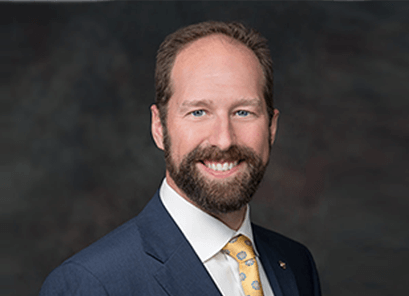The Mirage of the Million-Dollar Dream
Micah Shilanski, CFP®: it’s not about making it appear; it’s about making it happen.
9 min read

Financial Planner, CFP®
You dream in numbers, and it’s a five-year vision that spells out, “I want to earn $1M dollars.” Yet the question remains – are you willing to do the work that it takes for that sum or just wish for it to materialize out of thin air?
I’ve heard it, you’ve heard it, we’ve all heard it. The siren call of that mystical one million dollars in income. Yet, these newer advisors want to amass their fortunes without sacrificing their paid vacation time, while ensconced comfortably at home, clad in the casual attire of sweatpants.
Has softness replaced grit? Is it simply a product of the changing times? I find myself reluctantly wondering if I’ve become part of the old guard, watching a metamorphosis unfold within our workforce as fewer and fewer people want to return to “traditional” work.
This evolution of the emerging advisor raises a question: does this transition undermine rather than fortify our breed of strong, critical thinkers that clients need most to steward them through life’s financial choices and challenges?
What price are you willing to pay for no longer returning to the office?
How we process feedback based on our generational upbringing
A recent study tossed some broad strokes across the generational canvas that was rather insightful to watch the trending patterns of how we process how relationships work and our esteem based on what generation we belong to.
Yes, it’s an overview, but it provides us, the architects of practice and mentors to young professionals, with valuable insights about the workforce melting together today so that we can become acutely aware of the leaders we need to be. While there is a dwindling number of “Traditionalists” in the workforce in the United States today, there are four others all working together; the Baby Boomers, Generation X, Millennials, and Generation Z.
1. Traditionalists, born between 1928 and 1945, are those who prefer formality. For them, an annual review or a written commendation holds merit.
2. Baby Boomers, born between 1946 and 1964, seek recognition on a personal level. They relish competition and the formal celebration of their successes.
3. Generation X, born between 1965 and 1980, values autonomy and direct, straightforward feedback. Regularity is less important than honesty and constructive criticism.
4. Millennials, born between 1981 and 996, crave frequent feedback in real-time or at least weekly. They want both affirmation and constructive advice for personal growth.
5. Generation Z, born 1997 onwards, echoes the Millennials, but might even demand feedback with greater frequency. In the age of instant communication, they anticipate its swift arrival.
Today’s communication – rapid, electronic exchanges – is a double-edged sword. It binds Millennials and Generation Z in unique ways but fails to bridge the gap for meaningful dialogue. Instant messages are rife with colorful emoticons and abbreviations, creating a lexicon of deceptive simplicity and codes that cause misunderstandings (k… k? Ok!) Failures in communication abound. Traditionalists, Baby Boomers, and Generation X professionals are more likely to pick up the phone and call someone when something comes across as ambiguous, disagreeable, or confrontational. Meanwhile, Millennials and Generation Z may lean towards reading, re-reading, discussing with peers, screenshotting, over-thinking, and calculating their response for hours, if not days on end. Is such a drawn-out delay in response a sign of critical thinking or dangerous overthinking?
How much time, effort, and energy is wasted trying to interpret written communication from cold screens that could have been resolved with in-person communication?
Like all pendulums, perhaps we swung too far. The COVID-19 pandemic forced many people to abandon commercial office space and work from home. The return to the office, though, has been as slow as molasses sliding downhill in January. It’s painful to watch.
Digital dialogues reflect an escape from the office, an avoidance of the shared workspace. Could this evasion stunt the growth of our young professionals,and is it a price they are willingly, knowingly ready to pay?
Consider the phrase “return to work or pretend to work somewhere else” or, something Elon Musk-y.
I’ve led multiple companies, both physical and virtual. Each model has its pros and cons, but if you were to ask me which one is more effective, I’d say in person, without a moment’s hesitation.
The hard-charging young professionals who are ready to commit their nights, weekends, and holidays to their work have an edge. They seize every opportunity to learn, and being physically present gives them a clear advantage over those who avoid social interactions, routine discipline, and consistency.
They gain wisdom from seasoned colleagues, foster teamwork, connect with influential people and key clients, become front-runners for career advancement, and sharpen their competitive edges.
Can all of this be attained from home? Not likely, or at least not with the same vigor and pace. How many times has someone wanted to reach out but saw your “busy” or “offline” notification and decided not to?

The advantage of being physically present
Lately, I found myself engaged in enlightening one of the young advisors on our team, attempting to instill in him the notion that an office summons was far from a punitive measure. It was a rally cry that we needed and wanted their involvement.
The individual who thrives in such an arrangement boasts an innate sense of discipline and immunity to the relentless tug of household duties and the constant drone of to-do lists. In conducive circumstances, the home becomes an immediate sanctuary of focus, but how many of us truly have that level of solitude in our living environments? No spouse? No kids? No pets? No roommates?
But this convenience has a cost – the stifling of collaboration. The collective fatigue brought on by endless rounds of Zoom, Google Meets, or Microsoft Teams is palpable. People don’t approach these encounters, whether routine or sporadic, with the same inventive zest that flourishes in close quarters. There’s an undeniable magic to brainstorming together, shoulder to shoulder, throwing ideas on a giant 3M sticky pad, and reacting in real-time to someone’s body language: what ideas land, what are exciting, which do we dread?
This ability to connect, and to ricochet ideas off one another is a potent human gift, a tool not to be discarded lightly by the new generation of workers rising through the ranks.
There’s something to be said about sharing physical space, too. It lends credibility, and paints you in the hues of humanity before your peers. It’s an invisible token, this social currency gained from forging bonds with those you stand shoulder to shoulder with in the trenches. The people who you show up for and, in return, show up for you.
Does it warrant marking your presence every day of the week? Not necessarily. But should it be acknowledged for the true worth and significance it imparts? Absolutely.
Indeed, especially for millennials and Gen X, who yearn for regular, pointed feedback, what better avenue to harvest such insights than face-to-face discourse? The energy of immediacy, the nuance of body language, the vibrancy of spontaneous conversation—these qualities are unique to in-person interaction and tend to get lost in the ether of digital communication.
Feedback, when delivered in person, carries a tangible weight, a heft that helps it root deep in understanding and prompt effective change. It forges an environment for real-time queries and fluid discussions and provides room for empathetic guidance from peers and leaders.
Can the same be achieved while sitting alone, the cold glow of a screen the only exchange? Doubtful. Does that underscore the importance of balance in this digital age – some days dedicated to the quiet focus of home, others to the dynamic buzz of the office? Absolutely. The tide calls for flexibility, for adapting to the rhythm that fits each individual and task.
But let’s not forget – the power of physical presence, of communal workspaces, remains as relevant as ever. Especially for the younger generations, who navigate their early career stages seeking guidance and growth. It’s not just about feedback; it’s about the full, rich tapestry of learning, growing, and succeeding together. Collectively.
I relish my time away from the office, enjoying the quiet solitude of my home workspace for deep-focus work. But this wasn’t how I forged my career path. Working from home can be a wonderful thing, but for the young financial advisor striving to make a mark, could it be a misstep in their career that they will spend years trying to recover from?
Perhaps a blend of both worlds, a hybrid work situation, could be the answer. Allocating specific days for in-office collaboration and others for focused work at home.
This balance might just be the key to success rather than wishing for the million to appear.
Popular Topics
Still Holding Out on Surge™? 2023 Could Be Your Year
Micah Shilanski, CFP®, busts myths and misconceptions surrounding Surge meetings and shows how
Value Adds
If you are routinely providing clients with value adds in a consistent, efficient, and deliverable
Is That OK With You?
One of the most significant differences between ‘good’ advisors and rock-star level advisors is
Like Coke from a Coffee Mug: Run Your Best Client Meeting
Client meetings can be a dreaded part of a routine or you and your clients’ favorite part of your
5 Questions Every Advisor Should Ask
Matthew Jarvis, CFP®, answers five essential questions every advisor should ask to transform
What You Should
READ NEXT
Three Myths About Surge And What You Should Know
Despite taking the industry by storm, advisors still believe these three myths about Surge. Micah Shilanski, CFP®, shares how to overcome these common Surge
3 THINGS CPAs ARE THINKING BUT WON’T SAY OUT OF COURTESY
Matthew Jarvis, CFP®, uncovers the 3 key concerns CPAs have when referring clients to financial advisors and learns how to address them for stronger, trust-based relationships and valuable
Prospecting Got You Down? Here’s How To Turn It Around
Rejection hurts, which is why so many advisors hide from prospecting by playing office. Micah Shilanski, CFP®, shares ways to adjust your mindset around
Start the change today!
Get our 3 most popular power sessions FREE. You and your team will learn about: Time Blocking, the One Page Financial Plan, and the “Buckets of Money” approach.
